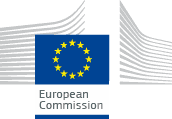The Ecodesign Directive
Sustainable industrial policy aims in particular at developing a policy to foster environmental and energy efficient products in the internal market. The Ecodesign Directive 2009/125/EC is the cornerstone of this approach. It establishes a framework for the setting of ecodesign requirements for energy-related products with the aim of ensuring the free movement of those products within the internal market. Directive 2009/125/EC repealed the original Directive 2005/32/EC for the setting of ecodesign requirements for energy-using products. It prevents disparate national legislations on the environmental performance of these products from becoming obstacles to the intra-EU trade and contributes to sustainable development by increasing energy efficiency and the level of protection of the environment, taking into account the whole life cycle cost.
The Ecodesign directive itself does not set binding requirements on products: it provides a framework (rules and criteria) for setting such requirements through implementing measures. It is also possible to introduce information requirements for components and sub-assemblies. The Commission prepares implementing measures only for products which have significant sales and trade in the EU, a significant environmental impact and potential for improvement. Product groups are identified following the procedure described in Article 16.
The Preparatory Study
This study is meant to build on the evidence provided by the preparatory study on distribution and power transformers (LOT 2) completed in January 2011. It is also meant to follow, as closely as possible, the lifecycle analysis methodology described in the MEErP deliverables, last updated in December 2013. The Methodology for Ecodesign of Energy-related products (MEErP) is further explained in the section Methodology. Other relevant is the Commission Impact Assessment Report.
The specific objectives are all related to Article 7 of Regulation 548/2014 for which it is required to review:
- the possibility to set out minimum values of the Peak Efficiency Index for all medium power transformers, including those with a rated power below 3 150 kVA;
- the possibility to separate the losses associated to the core transformer from those associated with other components performing voltage regulation functions, where this is the case;
- the appropriateness of establishing minimum performance requirements for single-phase power transformers, as well as for small power transformers;
- whether concessions made for pole-mounted transformers and for special combinations of winding voltages for medium power transformers are still appropriate;
- the possibility of covering environmental impacts other than energy in the use phase.
In addition, the study team will investigate if, in the light of technological progress, minimum requirements set out for Tier 2 in 2021 are still appropriate based on a market assessment of the evolution for conventional grain oriented magnetic steel and amorphous steel.
Therefore, the overall objectives of the study are summarised as follows:
- verify if requirements for Tier 2 are still cost-effective from a lifecycle analysis perspective;
- provide evidence for a consideration of minimum efficiency requirements for single-phase transformers;
- verify if regulatory concessions made for pole-mounted transformers and transformers with special combinations of winding voltages are still appropriate;
- analyse if existing requirements for medium power transformers based on absolute levels of losses should be converted to relative values based on the Peak Efficiency Index;
- analyse if widely accepted criteria for the repair of transformers can be developed;
- analyse if other, non-energy, environmental impacts of transformers should be regulated
For more information on the Ecodesign Directive 2009/125/EC and related activities, please visit the Links page.

